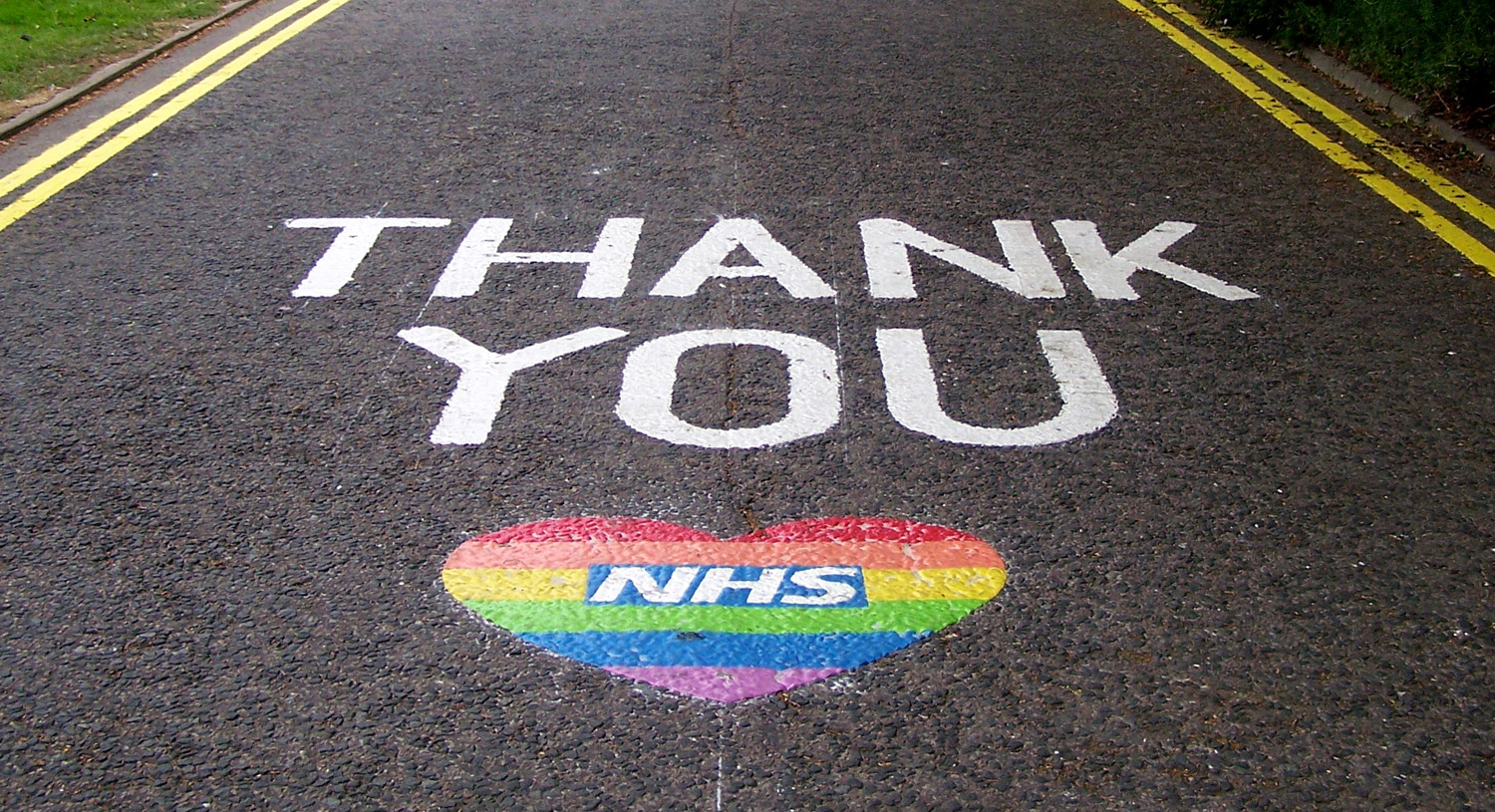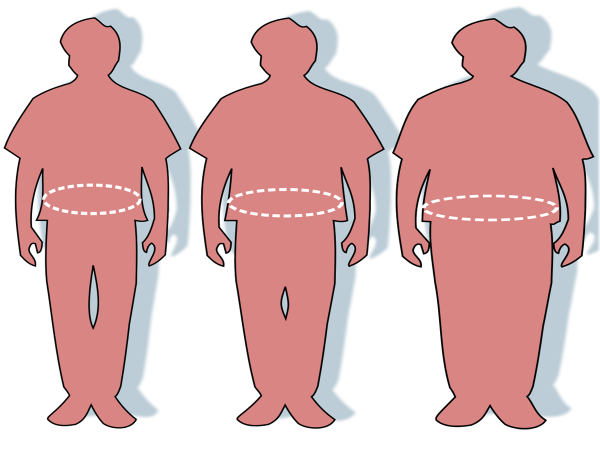 With waiting lists in the NHS at record highs and with the social care system in crisis, there have been growing calls for increased funding for both health and social care. The UK government has just announced tax rises to raise more revenue for both services and has specified new limits on the amounts people must pay towards their care.
With waiting lists in the NHS at record highs and with the social care system in crisis, there have been growing calls for increased funding for both health and social care. The UK government has just announced tax rises to raise more revenue for both services and has specified new limits on the amounts people must pay towards their care.
In this blog we look at the new tax rises and whether they are fair. We also look at whether the allocation of social care is fair. Clearly, the question of fairness is a contentious one, with people having very different views on what constitutes fairness between different groups in terms of incomes, assets and needs.
Funding
In terms of funding, the government has, in effect, introduced a new tax – the ‘health and social care levy’ to come into effect from April 2022. This will see a tax of 1.25% on the earned incomes of workers (both employees and the self-employed) and 1.25% on employers, making a total of 2.5% on employment income. It will initially be added to workers’ and employers’ national insurance (NI) payments. Currently national insurance is only paid by those below pension age (66). From 2023, the 1.25% levy will be separated from NI and will apply to pensioners’ earned income too.
The starting point for workers will be the same as for the rest of national insurance, currently £9568. Above this, the additional marginal rate of 1.25% will apply to all earned income. This will mean that a person earning £20 000 would pay a levy of £130.40, while someone earning £100 000 would pay £1130.40.
There will also be an additional 1.25% tax on share dividends. However, there will be no additional tax on rental income and capital gains, and on private or state pensions.
 It is estimated that the levy will raise around £14 billion per year (0.7% of GDP or 1.6% of total tax revenue), of which £11.2 billion will go to the Department of Health and Social Care in 2022/23 and £9 billion in 2023/24. This follows a rise in income tax of £8 billion and corporation tax of £17 billion announced in the March 2021 Budget. As a result, tax revenues from 2022/23 will be a higher proportion of GDP (just over 34%) than at any time over the past 70 years, except for a short period in 1969/70.
It is estimated that the levy will raise around £14 billion per year (0.7% of GDP or 1.6% of total tax revenue), of which £11.2 billion will go to the Department of Health and Social Care in 2022/23 and £9 billion in 2023/24. This follows a rise in income tax of £8 billion and corporation tax of £17 billion announced in the March 2021 Budget. As a result, tax revenues from 2022/23 will be a higher proportion of GDP (just over 34%) than at any time over the past 70 years, except for a short period in 1969/70.
Is the tax fair?
In a narrow sense, it can be argued that the levy is fair, as it is applied at the same percentage rate on all earned income. Thus, the higher a person’s earnings, the greater the amount they will pay. Also, it is mildly progressive. This is because, with a levy-free allowance of just under £10 000, the levy as a proportion of income earned rises gently as income rises: in other words, the average levy rate is higher on higher earners than on lower earners.
But national insurance as a whole is regressive as the rate currently drops from 12% to 2%, and with the levy will drop from 13.25% to 3.25%, once the upper threshold is reached. Currently the threshold is £50 270. As incomes rise above that level, so the proportion paid in national insurance falls. Politically, therefore, it makes sense to decouple the levy from NI, if it is being promoted as being fair as an additional tax on income earners.
Is it fair between the generations? Pensioners who earn income will pay the levy on that income at the same rate as everyone else (but no NI). But most pensioners’ main or sole source of income is their pensions and some, in addition, earn rent on property they own. Indeed, some pensioners have considerable private pensions or rental income. These sources of income will not be subject to the levy. Many younger people whose sole source of income is their wages will see this as unfair between the generations.
Allocation of funds
 For the next few years, most of the additional funding will go to the NHS to help reduced waiting lists, which rocketed with the diversion of resources to treating COVID patients. Of the additional £11.2 billion for health and social care in 2022/23, some £9.4 billion will go to the NHS; and of the £9 billion in 2023/24, some £7.2 billion will go to the NHS. This leaves only an additional £1.8 billion each year for social care.
For the next few years, most of the additional funding will go to the NHS to help reduced waiting lists, which rocketed with the diversion of resources to treating COVID patients. Of the additional £11.2 billion for health and social care in 2022/23, some £9.4 billion will go to the NHS; and of the £9 billion in 2023/24, some £7.2 billion will go to the NHS. This leaves only an additional £1.8 billion each year for social care.
The funding should certainly help reduce NHS waiting lists, but the government refused to say by how much. Also there is a major staff shortage in the NHS, with many employees having returned to the EU following Brexit and fewer new employees coming from the EU. It may be that the staff shortage will push up wages, which will absorb some of the increase in funding.
The additional money from the levy going to social care would be wholly insufficient on its own to tackle the crisis. As with the NHS, the social care sector is facing an acute staff shortage, again aggravated by Brexit. Wages are low, and when travel time between home visits is taken into account, many workers receive well below the minimum wage. Staff in care homes often find themselves voluntarily working extra hours for no additional pay so as to provide continuity of care. Often levels of care are well below what carers feel is necessary.
Paying for social care
 The government also announced new rules for the level of contributions by individuals towards their care costs. The measures in England are as follows. The other devolved nations have yet to announce their measures.
The government also announced new rules for the level of contributions by individuals towards their care costs. The measures in England are as follows. The other devolved nations have yet to announce their measures.
- Those with assets of less than £20 000 will not have to contribute towards their care costs from their assets, but may have to contribute from their income.
- Those with assets between £20 000 and £100 000 will get means-tested help towards their care costs.
- Those with assets over £100 000 will initially get no help towards their care costs. This is increasing from the current limit of £23 250
- There will be a limit of £86 000 to the amount people will have to contribute towards their care costs over their lifetime (from October 2023). These costs include both care in a care home and care at home.
- These amounts will apply only to care costs and not to the board and lodging costs in care homes. The government has not said how much people could be expected to contribute towards these living costs. A problem is that care homes generally do not itemise costs and hence it may be hard to distinguish care costs from living costs.
- Where people’s care costs are fully or partly covered, these will be paid by their local authority.
- A house will only count as a person’s asset if the person is going into a care home and it is not occupied by a spouse or partner. All financial assets, by contrast, will count.
- Many people in care homes will not be judged to be frail enough to be in receipt of support from their local authority. These people’s expenditure would not count towards the cap.
Setting the cap to the amount people must pay at the relatively high figure of £86 000 may ease the pressure on local authorities, as many people in care homes will die before the cap is reached. However, those who live longer and who get their care paid for above the cap, will pay no more no matter what their level of assets, even though they may be very rich. This could be seen to be unfair. A fairer system would be one where a proportion of a person’s assets had to be used to pay for care with no upper limit.
Also, the £1.8 billion is likely to fall well short of what local authorities will need to bring social care back to the levels considered acceptable, especially as the asset limit to support is being raised from £23 250 to £100 000. Local authority expenditure on social care fell by 7.5% per person in real terms between 2009/10 and 2019/20. This means that local authorities may have to increase council tax to top up the amount provided by the government from the levy.
Articles
- An initial response to the Prime Minister’s announcement on health, social care and National Insurance
Institute for Fiscal Studies Press Release, Paul Johnson, Carl Emmerson, Helen Miller, David Phillips, George Stoye, Isaac Delestre, Isabel Stockton, Kate Ogden, Robert Joyce, Stuart Adam, Tom Waters, Max Warner and Ben Zaranko (7/9/21)
- National Insurance rates to rise to fund social care crisis – how much more will you pay?
Which? News, Danielle Richardson (7/9/21)
- Social care tax rise: Boris Johnson wins Commons vote
BBC News (8/9/21)
- Will the cap really fix the social care system?
BBC News, Nick Triggle (8/9/21)
- National Insurance contributions to rise by 1.25% from April 2022 to fund social care costs
Money Saving Expert, James Flanders (7/9/21)
- Boris Johnson plan to fund health and social care lifts UK tax burden to 70-year high
Financial Times, George Parker, Laura Hughes and Chris Giles (7/9/21)
- Boris Johnson has created a ‘social care plan’ without any plan for social care
The Guardian, Frances Ryan (7/9/21)
- Analysis: The Government’s plans for health and social care
Reform, William Mills (8/9/21)
- Analysis: What does Boris Johnson’s health and social care tax mean for Scotland?
The Scotsman, Martyn McLaughlin (7/9/21)
- Social care tax rise is austerity by another name – economist Q&A
The Conversation, Alex de Ruyter (8/9/21)
- National insurance: a UK tax which is complex and vulnerable to political intervention
The Conversation, Gavin Midgley (8/9/21)
Video
Government document
Data
Questions
- How would you define a ‘fair’ way of funding social care?
- Distinguish between a proportional, progressive and regressive tax. How would you categorise (a) the new health and social care levy; (b) national insurance; (c) income tax; (d) VAT?
- Argue the case for providing social care free at the point of use to all those who require it.
- Argue the case for charging a person for some or all of their social care, with the amount charged being based on (a) the person’s income; (b) the person’s wealth; (c) both income and wealth.
- Argue the case for and against capping the amount a person should pay towards their social care.
- When a tax is used to raise revenue for a specific purpose it is known as a ‘hypothecated tax’. What are the advantages and disadvantages of using a hypothecated tax for funding health and social care?
 Back in October, we looked at the growing pressure in the UK for a sugar tax. The issue of childhood obesity was considered by the Parliamentary Health Select Committee and a sugar tax, either on sugar generally, or specifically on soft drinks, was one of the proposals being considered to tackle the problem. The committee studied a report by Public Health England, which stated that:
Back in October, we looked at the growing pressure in the UK for a sugar tax. The issue of childhood obesity was considered by the Parliamentary Health Select Committee and a sugar tax, either on sugar generally, or specifically on soft drinks, was one of the proposals being considered to tackle the problem. The committee studied a report by Public Health England, which stated that:
Research studies and impact data from countries that have already taken action suggest that price increases, such as by taxation, can influence purchasing of sugar sweetened drinks and other high sugar products at least in the short-term with the effect being larger at higher levels of taxation.
In his Budget on 16 March, the Chancellor announced that a tax would be imposed on manufacturers of soft drinks from April 2018. This will be at a rate of 18p per litre on drinks containing between 5g and 8g of sugar per 100ml, such as Dr Pepper, Fanta and Sprite, and 24p per litre for drinks with more than 8g per 100ml, such as Coca-Cola, Pepsi and Red Bull.
 Whilst the tax has been welcomed by health campaigners, there are various questions about (a) how effective it is likely to be in reducing childhood obesity; (b) whether it will be enough or whether other measures will be needed; and (c) whether it is likely to raise the £520m in 2018/19, falling to £455m by 2020/21, as predicted by the Treasury: money the government will use for promoting school sport and breakfast clubs.
Whilst the tax has been welcomed by health campaigners, there are various questions about (a) how effective it is likely to be in reducing childhood obesity; (b) whether it will be enough or whether other measures will be needed; and (c) whether it is likely to raise the £520m in 2018/19, falling to £455m by 2020/21, as predicted by the Treasury: money the government will use for promoting school sport and breakfast clubs.
These questions are all linked. If demand for such drinks is relatively inelastic, the drinks manufacturers will find it easier to pass the tax on to consumers and the government will raise more revenue. However, it will be less effective in cutting sugar consumption and hence in tackling obesity. In other words, there is a trade off between raising revenue and cutting consumption.
 This incidence of tax is not easy to predict. Part of the reason is that much of the market is a bilateral oligopoly, with giant drinks manufacturers selling to giant supermarket chains. In such circumstances, the degree to which the tax can be passed on depends on the bargaining strength and skill of both sides. Will the supermarkets be able to put pressure on the manufacturers to absorb the tax themselves and not pass it on in the wholesale price? Or will the demand be such, especially for major brands such as Coca-Cola, that the supermarkets will be willing to accept a higher price from the manufacturers and then pass it on to the consumer?
This incidence of tax is not easy to predict. Part of the reason is that much of the market is a bilateral oligopoly, with giant drinks manufacturers selling to giant supermarket chains. In such circumstances, the degree to which the tax can be passed on depends on the bargaining strength and skill of both sides. Will the supermarkets be able to put pressure on the manufacturers to absorb the tax themselves and not pass it on in the wholesale price? Or will the demand be such, especially for major brands such as Coca-Cola, that the supermarkets will be willing to accept a higher price from the manufacturers and then pass it on to the consumer?
Then there is the question of the response of the manufacturers. How easy will it be for them to reformulate their drinks to reduce sugar content and yet still retain sales? For example, can they produce a product which tastes like a high sugar drink,  but really contains a mix between sugar and artificial sweeteners – effectively a hybrid between a ‘normal’ and a low-cal version? How likely are they to reduce the size of cans, say from 330ml to 300ml, to avoid raising prices?
but really contains a mix between sugar and artificial sweeteners – effectively a hybrid between a ‘normal’ and a low-cal version? How likely are they to reduce the size of cans, say from 330ml to 300ml, to avoid raising prices?
The success of the tax on soft drinks in cutting sugar consumption depends on whether it is backed up by other policies. The most obvious of these would be to impose a tax on sugar in other products, including cakes, biscuits, low-fat yoghurts, breakfast cereals and desserts, and also many savoury products, such as tinned soups, ready meals and sauces. But there are other policies too. The Public Health England report recommended a national programme to educate people on sugar in foods; reducing price promotions of sugary food and drink; removing confectionery or other sugary foods from end of aisles and till points in supermarkets; setting broader and deeper controls on advertising of high-sugar foods and drinks to children; and reducing the sugar content of the foods we buy through reformulation and portion size reduction.
Articles
- Sugar tax: How it will work?
BBC News, Nick Triggle (16/3/16)
- Will a sugar tax actually work?
The Guardian, Alberto Nardelli and George Arnett (16/3/16)
- Coca-Cola and other soft drinks firms hit back at sugar tax plan
The Guardian, Sarah Butler (17/3/16)
- Sugar tax could increase calories people consume, economic experts warn
The Telegraph, Kate McCann, and Steven Swinford (17/3/16)
- Nudge, nudge! How the sugar tax will help British diets
Financial Times, Anita Charlesworth (18/3/16)
- Is the sugar tax an example of the nanny state going too far?
Financial Times (19/3/16)
- Government’s £520m sugar tax target ‘highly dubious’, analysts warn
The Telegraph, Ben Martin (17/3/16)
- Sorry Jamie Oliver, I’d be surprised if sugar tax helped cut obesity
The Conversation, Isabelle Szmigin (17/3/16)
- Sugar sweetened beverage taxes
What Works for Health (17/12/15)
Questions
- What determines the price elasticity of demand for sugary drinks in general (as opposed to one particular brand)?
- How are drinks manufacturers likely to respond to the sugar tax?
- How are price elasticity of demand and supply relevant in determining the incidence of the sugar tax between manufacturers and consumers? How is the degree of competition in the market relevant here?
- What is meant by a socially optimal allocation of resources?
- If the current consumption of sugary drinks is not socially optimal, what categories of market failure are responsible for this?
- Will a sugar tax fully tackle these market failures? Explain.
- Is a sugar tax progressive, regressive or proportional? Explain.
- Assess the argument that the tax on sugar in soft drinks may actually increase the amount that people consume.
- The sugar tax can be described as a ‘hypothecated tax’. What does this mean and is it a good idea?
- Compare the advantages and disadvantages of a tax on sugar in soft drinks with (a) banning soft drinks with more than a certain amount of sugar per 100ml; (b) a tax on sugar; (c) a tax on sugar in all foods and drinks.
A large deficit which needs cutting and this needs decisive action. This was the gist of the message from George Osborne, and generally from the Coalition government. Although there is nothing confirmed in terms of what to expect, it is thought that there will be a proposal to ease National Insurance for new businesses. He said:
“And so we’ve got to deal with that [the country in Europe with the largest budget deficit of any major economy]. In that sense it’s an unavoidable Budget, but what I’m determined to do is to make sure that the measures are tough but they’re also fair and that we’re all in this together and that, as a country, we take the steps necessary to actually provide the prosperity for the future.”
We already know that there are plans in place to increase capital gains tax from 18% to nearer 40%, but beyond that, little is known. There are concerns that this policy may actually cost the government more in tax revenue than it will raise. Other policies we might expect include a rise in VAT, and a slashed spending budget for pensions. These spending cuts and tax rises will help Osborne to eliminate the structural deficit in current spending by 2015, when the Coalitions’ current term comes to an end. The success of the Coalition’s policies and their ability to reduce the deficit without causing the economy to fall back into recession will be crucial in determining whether the current term is the only term.
Budget 2010: Britain on ‘road to ruin’ without cuts (including video) BBC News (20/6/10)
Where could spending axe fall? BBC News (9/6/10)
George Osborne says emergency budget cuts will be ‘tough but fair’ Guardian, Larry Elliott, Toby Helm, Anushka Asthana and Maev Kennedy (20/6/10)
Budget 2010: capital gains tax Telegraph (20/6/10)
What’s the Chancellor planning to take away in reverse Christmas budget Independent, Alison Shepherd and Julian Knight (20/6/10)
Public borrowing at a peak, says ONS, but tough budget awaits Independent, Sean O’Grady (20/6/10)
 A bloodbath none was prepared for Financial Times, Martin Wolf (22/6/10)
A bloodbath none was prepared for Financial Times, Martin Wolf (22/6/10)
Questions
- To what extent is it necessary to cut the budget deficit now and not delay it until the recovery is more secured?
- How will easing National Insurance for small businesses affect the economy?
- If capital gains tax goes up, why is there concern that this could actually cost the government? How is this possible?
- The Lib Dems will oppose any increase in VAT, as they argue it is a regressive tax. What does this mean?
- How will the report by the Office for Budget Responsibility have affected Osborne’s emergency budget?
- What is the structural budget deficit? Illustrate it on a diagram.
Labour’s Chancellor, Alistair Darling, delivered his last budget on the 24th March 2010. However, with the new Coalition government planning to make more substantial cuts and with George Osborne and other ministers claiming to find ‘black holes’ in the budgets left by Labour, an emergency budget will take place on the 22nd June 2010. The Coalition government has agreed to make £6 billion of spending cuts in the current year in a bid to reduce the UK’s substantial budget deficit, which stands at nearly 12% of GDP. Vince Cable told the Times:
I fear that a lot of bad news about the public finances has been hidden and stored up for the new government. The skeletons are starting to fall out of the cupboard.
There are plans to reform capital gains tax, possibly increase VAT to 20% and remove tax credits from some middle-income families. In Alistair Darling’s budget, it was middle-income families who were among the ‘losers’, with tax rises of around £19 billion, and it looks as though middle-income families may be hit again. Throughout the election all parties pledged to continue to help the poorest families, but there appears to be a lot of uncertainty ahead for middle-income families. They are likely to face reduced benefits and higher taxes as the Coalition government tackles the £163 billion deficit.
Despite critics of spending cuts arguing that it could cause a double-dip recession, the government is confident that cutting spending now is the right thing to do. As Osborne told GMTV:
I am pretty clear that the advice from the Governor of the Bank of England was that [cutting spending now] was a sensible thing to do, and if there is waste in Government that people at home are paying for with their taxes, let’s start tackling that now.
Chancellor launches audit of government spending Independent, Andrew Woodcock (17/5/10)
Osborne to give details of £6bn spending cuts next week (including video) BBC News (17/5/10)
 Savings cuts to ‘hit middle class families’ BBC News (15/5/10)
Savings cuts to ‘hit middle class families’ BBC News (15/5/10)
Osborne to deliver emergency budget on June 22nd Times Online, Susan Thompson (17/5/10)
David Cameron declares war on public sector pay Telegraph, Rosa Prince (16/5/10)
All eyes on the emergency Budget Financial Times, Matthew Vincent (14/5/10)
Tax rises likely under Coaliation government, says Institute of Fiscal Studies Telegraph, Edmund Conway (13/5/10)
Questions
- What will be the likely impact on middle-income families if proposed spending cuts go ahead? How might this affect the recovery?
- What are the arguments for a) cutting spending now and b) cutting spending later?
- In the future, the Coalition government plans to limit bonus payments. How might this policy affect jobs and recruitment?
- What is the likely impact of the future increase in personal tax allowance? Who will it benefit the most?
- How are the proposals for corporation tax and capital gains tax likely to affect the economic recovery?
- Is a rise in VAT a good policy? Who will it affect the most? Will it reduce consumption and hence aggregate demand or is it likely simply to raise tax revenue? (Hint: Think about the type of tax that VAT is.)
For many people, internet access is something we take for granted and if you can’t afford to connect, you might be seen to be in relative poverty. Whilst you can afford food, clothes, housing etc, other goods and services are increasingly being seen as necessities. Everyone should be able to afford a mobile phone, a television, the internet. These are all factors that contribute towards a feeling of social inclusion, which is something the government has promoted since its election in 1997.
Although internet access is the norm for most people, in the UK our internet speeds are actually significantly slower than those in other industrialised countries. All this could be about to change, with Labour’s proposal for a 50p monthly tax on households’ landlines to fund super-fast broadband across the country. However, this plan has been condemned by some influential MPs, who argue that the tax is regressive.
“We believe that a 50 pence levy placed on fixed telecommunication lines is an ill-directed charge. It will place a disproportionate cost on a majority who will not, or are unable to, reap the benefits of that charge.”
More important, they argue, is to make sure that everyone has internet access, rather than that everyone has fast access, which is not needed at the moment. When there is a demand for high-speed access from the masses, the market will provide it. However, the government argues that high-speed access is crucial to our economic growth, as it allows access to huge social, economic and health benefits. On the other hand, could such a tax reduce growth, by limiting technological innovation? The Conservatives have promised that if elected, they will scrap this broadband levy and instead aim to fund high-speed internet access by providing ‘BT’s rivals with regulatory incentives to roll out new telecoms networks’. This highly contentious issue is discussed in the articles below.
The Broadband tax: dead in the water? BBC News, Rory Cellan-Jones (23/2/10)
Broadband tax plan condemned Press Association (23/2/10)
Social tariff users need to be made aware of broadband tax exemption Broadband Expert (17/2/10)
Broadband tax could dissuade technology innovation Broadband (27/1/10)
Tories pledge rise in broadband speed Financial Times, Andrew Parker and Ben Fenton (9/2/10)
Fast broadband: an election issue? BBC News, Rory Cellan-Jones (3/2/10)
Questions
- What will be the effect of a tax on landlines? Illustrate this on a diagram and think about who will be affected. What type of tax does it represent: direct, indirect, specific, ad-valorem, etc?
- Is the tax fair? Why is it argued to be regressive?
- How will the Conservative party’s aim to provide regulatory incentives to BT’s rivals allow them to provide high-speed internet access? Is their solution better than Labour’s proposal?
- Why might the provision of high-speed internet access (a) stimulate economic growth and (b) constrain economic growth?
- Use a growth model to illustrate the importance of technological progress in achieving high levels of economic growth.
- How will a tax affect households? Consider the impact on income and consumption and hence on aggregate demand.
 With waiting lists in the NHS at record highs and with the social care system in crisis, there have been growing calls for increased funding for both health and social care. The UK government has just announced tax rises to raise more revenue for both services and has specified new limits on the amounts people must pay towards their care.
With waiting lists in the NHS at record highs and with the social care system in crisis, there have been growing calls for increased funding for both health and social care. The UK government has just announced tax rises to raise more revenue for both services and has specified new limits on the amounts people must pay towards their care. It is estimated that the levy will raise around £14 billion per year (0.7% of GDP or 1.6% of total tax revenue), of which £11.2 billion will go to the Department of Health and Social Care in 2022/23 and £9 billion in 2023/24. This follows a rise in income tax of £8 billion and corporation tax of £17 billion announced in the March 2021 Budget. As a result, tax revenues from 2022/23 will be a higher proportion of GDP (just over 34%) than at any time over the past 70 years, except for a short period in 1969/70.
It is estimated that the levy will raise around £14 billion per year (0.7% of GDP or 1.6% of total tax revenue), of which £11.2 billion will go to the Department of Health and Social Care in 2022/23 and £9 billion in 2023/24. This follows a rise in income tax of £8 billion and corporation tax of £17 billion announced in the March 2021 Budget. As a result, tax revenues from 2022/23 will be a higher proportion of GDP (just over 34%) than at any time over the past 70 years, except for a short period in 1969/70. For the next few years, most of the additional funding will go to the NHS to help reduced waiting lists, which rocketed with the diversion of resources to treating COVID patients. Of the additional £11.2 billion for health and social care in 2022/23, some £9.4 billion will go to the NHS; and of the £9 billion in 2023/24, some £7.2 billion will go to the NHS. This leaves only an additional £1.8 billion each year for social care.
For the next few years, most of the additional funding will go to the NHS to help reduced waiting lists, which rocketed with the diversion of resources to treating COVID patients. Of the additional £11.2 billion for health and social care in 2022/23, some £9.4 billion will go to the NHS; and of the £9 billion in 2023/24, some £7.2 billion will go to the NHS. This leaves only an additional £1.8 billion each year for social care. The government also announced new rules for the level of contributions by individuals towards their care costs. The measures in England are as follows. The other devolved nations have yet to announce their measures.
The government also announced new rules for the level of contributions by individuals towards their care costs. The measures in England are as follows. The other devolved nations have yet to announce their measures. Johnson admits breaking manifesto promise on tax rises for health and social care
Johnson admits breaking manifesto promise on tax rises for health and social care


